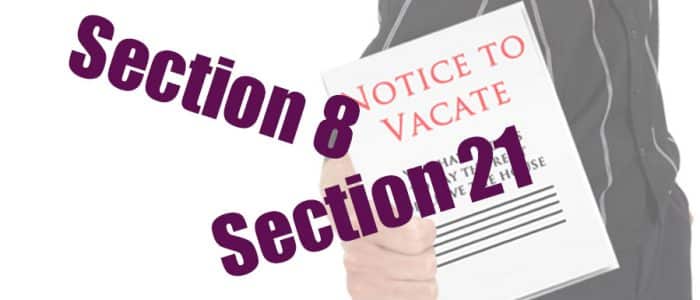Eviction Notice Templates Explained
Stephen Avila
As a landlord there will be a range of circumstances that you will encounter where it becomes appropriate to take action to evict a tenant from the property that they are renting.
In this guide we explore what eviction notices are; the different types of eviction notices and the circumstances in which each type of notice should be used.
The starting point is to make sure that you understand the eviction process and for that you can read this guide to eviction for a detailed understanding.
What is an Eviction Notice?
An eviction notice is a formal notice that is sent to the tenant advising them that you are, or may be, taking action to recover the property that is being rented by the tenant. In some instances the notice may be used to advise a tenant that they are in breach of a provision of the rental contract and that unless remedied you will proceed to take action to recover the property.
There are a range of eviction notice templates that can be used to give notice of eviction to a tenant. When evicting a tenant the process, and in turn the type of notice to use, depends on whether the property is residential or commercial.
If the property is commercial rather than residential then you should follow the process set out in the letting contract. This will usually involve completing a ‘notice to quit’ which does not need to be in any specific form unless the lease agreement requires it to be.
If the property is residential and is an assured shorthold tenancy, then there is a formal procedure to be followed.
There are two types of assured shorthold tenancy contracts that you may have in place.
- A ‘fixed term tenancy’ which is a tenancy arrangement that continues for a fixed period of time. E.g. 12 months.
- A ‘periodic’ tenancy (sometimes called a ‘rolling tenancy’) which continues for agreed periods. E.g. monthly or weekly.
If a fixed term tenancy expires and you have allowed the tenant to remain without putting in place a new tenancy agreement or agreeing a new fixed period then the tenancy will have become a periodic tenancy.
Types of Eviction Notices – and when to use them!
The procedure and the correct eviction notice that should then be used depends on whether the tenancy has passed it ‘fixed term’ period or whether the tenancy is within the fixed term.
The Tenancy Has Expired – Section 21 Notice (Form 6A)
If the tenancy was a fixed-term tenancy and the fixed term has expired, then use a section 21 notice (Form 6A).
This notice can also be used with a periodic tenancy, but there are rules governing exactly what the notice must terminate. For detailed guidance, read our guide to tenant eviction.
When using this notice, you must give the tenant at least two months’ notice to vacate the property in question.
The notice is a document that the Government provides for free and is now called ‘Form 6A’ which they updated in November 2017 so make sure you are not using an old ‘section 21 notice’. You can download the Form 6A notice for free from this page here along with the guidance notes for completing it.
The Tenancy is Within Its Term – Section 8 Notice
If the tenancy is for a fixed term period and you want the tenant vacate before the expiry of the fixed term (usually because the tenant is in breach of one or more terms of the tenancy agreement) then a section 8 notice to quit should be used. For example the tenant is not paying rent – which is a common ground on which to issue the notice. Our guide on tenants not paying rent may be useful if this applies to you.
The notice is referred to as a section 8 notice because it arises under the terms of section 8 of the Housing Act 1988.
However on the Government’s website where you can download a free template form they call it “Notice Seeking Possession of a Property Let On An Assured Tenancy or an assured agricultural occupancy” – That’s quite a mouthful of a title! They also call it “Form3”.You can download the form from this page of their website.
Unfortunately they do not provide comprehensive guidance notes to completing the form like they do with the section 21 notice.
The length of time that the notice that you must give must last for depends on what ground within Section 8 of the Housing Act you are relying on to take back possession of the property.
How Do You Give Notice To A Tenant?
Whether you are sending the tenant a notice in relation to an assured shorthold tenancy or any other tenancy you need to send the notice to the tenant.
With an assured shorthold tenancy you should send the formal section 8 or section 21 notice with a covering letter to the address occupied by the tenant.
Once you have given or sent the appropriate notice to the tenant you should complete a certificate of service which is called ‘form N215’ and is also available free from the Government’s website here.
It is advisable to make sure that you can prove that the letter and the enclosed notice was actually received.
If the circumstances make it possible to do so then you can serve the notice in person. However in most circumstances it will be more appropriate to post the letter and notice by recorded delivery.
Get Legal & Compliance tips straight to your inbox, free!
"*" indicates required fields


